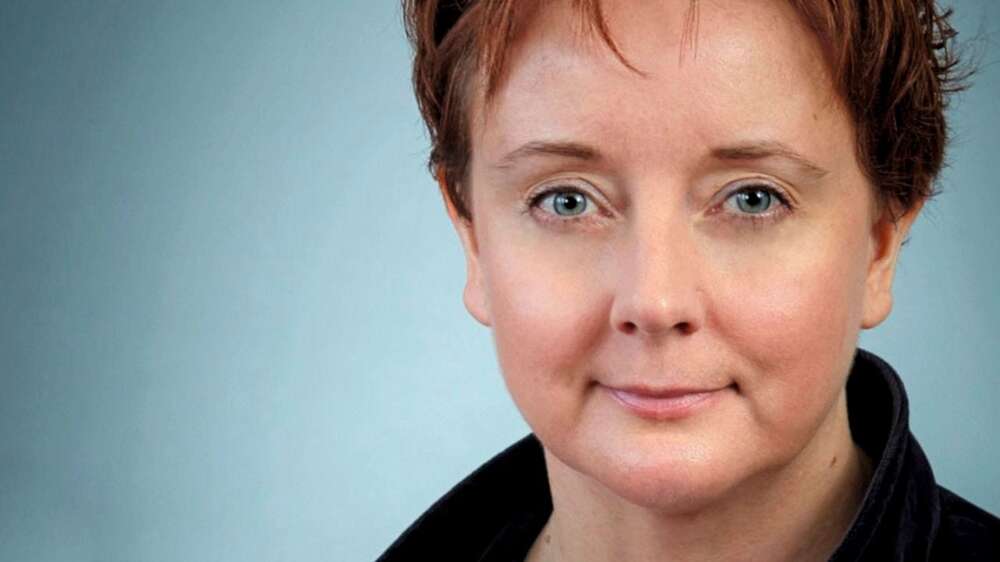You are viewing your 1 free article this month. Login to read more articles.
Emma Flint | 'Crime fiction is about trying to work out who is telling a lie'
For the past few years the crime genre has been dominated by a certain type of psychological thriller. An unreliable and flawed female narrator plus a contemporary domestic setting plus a plot with breakneck twists have been the key ingredients in bestsellers from Gone Girl to Before I Go to Sleep and the seemingly unstoppable The Girl on the Train. Wonderful as these are, perhaps it is time for something a little different...
Little Deaths (Picador, January) is set in the summer of 1965, in the working-class New York borough of Queens. Ruth Malone, a glamorous cocktail waitress recently separated from her husband Frank, wakes up one morning to find her two young children, Cindy and Frank Jr, are missing. The police are called and, later that day, make a tragic discovery; half a mile away her daughter’s lifeless body is found. Shockingly, she has been strangled. Ten days later the police find the body of Frank Jr, also known as Frankie.
When we meet in a Soho cafeÃÅ, deÃÅbut author Emma Flint explains that Little Deaths was inspired by a true crime case from the 1960s: Alice Crimmins, a mother in New York, was suspected of strangling her two children. Flint was a teenager with an avid interest in true crime and, impressively, a subscription to the weekly Murder Casebook series which is where she first came across the Alice Crimmins case. Twenty years later Flint says “she popped back into my head”.
Setting the scene
It didn’t take Flint long to find photographs of Alice Crimmins online as the case gripped the media at the time. She sat down to write the scene which appears in the first chapter of Little Deaths, where Ruth, who is based on Alice Crimmins, is carefully applying her make-up. It is a scene that sets the tone perfectly. Ruth is young and beautiful, but she does not act the way society, then and now, believes a mother should act. Ruth Malone loves her children but she also drinks, sleeps with men who are not her estranged husband and takes enormous care over her appearance. She does these things before her children disappear, and—crucially—after the bodies are found. She does not behave as the police and neighbours think a grieving mother should.
Ruth is at the heart of the novel, she enthrals the other characters, notably Pete Wonicke, the tabloid hack sent to cover the case, and the gossipy neighbour Lena Gobeck. Although the reader is privy to Ruth’s point of view she remains tantalisingly unknowable which, of course, powers the plot: did she, or didn’t she, murder her children? She is a fascinating character, fully rounded and very complicated. Flint says, of her creation: “I was obsessed with her for six years. I thought about her every single day, sometimes for hours every day.”
As a reader, one’s sympathies fluctuate constantly. I tell Flint that throughout the novel my mind was ticking: it must be her, it can’t be her, it must be her, but it can’t be her. Flint looks pleased: “She is made up of shades of grey. She has got all these different aspects to her. I wanted to show that there’s no such thing as black and white in a real human being.”
I always felt that she didn’t get a fair hearing. I always felt that she was judged not on the basis of the evidence but that she was judged for who she was and what she looked like
Of the real-life case Flint says “Whether [Alice Crimmins] did it or not, I always felt that she didn’t get a fair hearing. I always felt that she was judged not on the basis of the evidence but that she was judged for who she was and what she looked like.”
For those interested in where history ends and fiction begins, the ages and sexes of the children, and the date they go missing, 14th July 1965, are the same in the Crimmins case and the novel. Ruth and the nosey neighbour are based on real people but pretty much everything else comes from Flint’s imagination. She did most of her research online. In addition to reading the contemporary press coverage of the double murder, she used Google Street View to wander down the streets of Queens and watched YouTube videos to nail the local accent. But she also used her own experience in the novel, of growing up on the outskirts of Newcastle and experiencing “that claustrophobia you get in a small suburb where everybody knows each other. Anything out of the ordinary is noticed and anyone who doesn’t quite fit in stands out enormously.”
Flint recalls reading her first proper crime novel—an Agatha Christie—aged nine and says “what interested me even more than the detection was the person committing the crime. I couldn’t imagine what it would be like to commit a terrible crime, and carry on living your life. Pretending everything was normal and having to fool everyone around you. I think as a child it was that fascination with telling lies and telling stories. I still think that is what crime fiction is about—it’s about trying to work out who is telling a lie. And in the best crime stories, everybody is telling a lie.”
As a teenager she discovered true crime and declared an ambition to become a Home Office pathologist although went off the idea when she realised she would need three science A-Levels to get onto a forensic science degree course. Pathology is still “the purest form of detection” she reckons, pointing out that in classic crime stories the detective must work backwards from the dead body to find out everything about the crime.
Passion for fiction
Abandoning ideas of forensic science as a career she studied English Language and Literature at the University of St Andrews. She went on to work as a technical writer in IT but all along her heart was in fiction. When the kernel of what would become Little Deaths came to her, it then took four years to write the first draft. This draft was good enough to secure her a place on the prestigious Faber Academy creative writing course in 2013. At the graduation ceremony, where each graduate reads their work aloud for two minutes to a room full of agents, Flint read around 300 words of Little Deaths, and within two weeks had received nine offers of representation. Now Little Deaths has sold in four territories including the US.
Flint foresees her passion for true crime carrying on into future novels.
“I have probably dozens of [true crime] stories that I think I could turn into books” she says, and she is already hard at work on her second novel, set in 1920s London and the south coast which has been described as a blend of murder, sex and obsession. “In all of [the stories] there is something that has gripped and obsessed me. Usually it’s a character, so with Little Deaths it was Ruth. I think I need that sort of obsession in order to want to spend time [writing] a story.”
“There is a saying that truth is stranger than fiction, I totally agree with that. There is something really compelling about the fact that these things actually happened. That I’m not just making it all up...”










